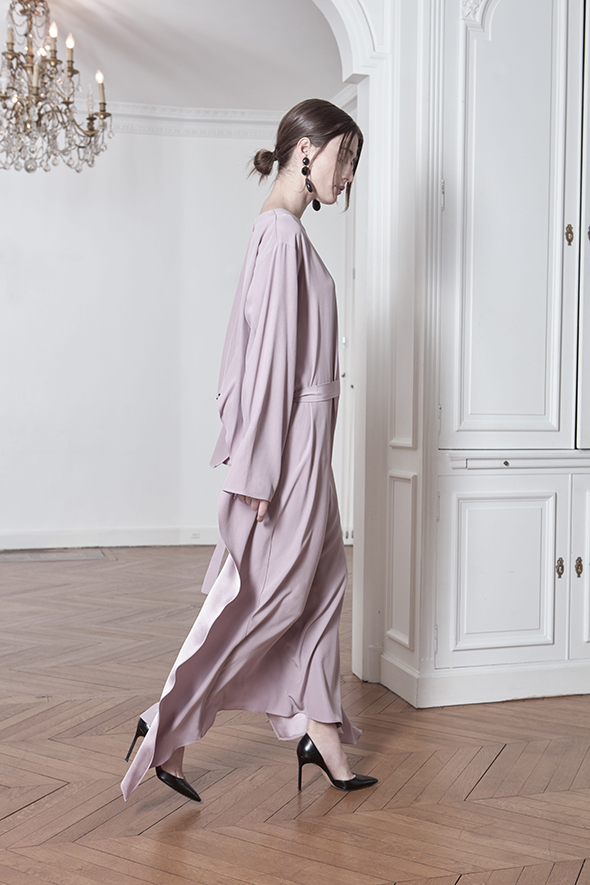
Marei1998 is the eponymous label of newfangled Israeli designer, Maya Reik. The portmanteau of the 19 year-old couturier’s name comme brand just happens to resemble the moniker of the historical Le Marais district in Paris — a happy coincidence Reik later realized, even as she viscerally sensed all along that her designs would befit such a storied arrondissement. And that’s exactly the sort of parqueted, centuries-old pied-à-terre that plays into Reik’s vision for her whimsical Spring/Summer 2017 collection.
Existing purely in editorial form on the Marei1998 site for the moment, Reik’s lookbook of over two dozen ensembles imagines a day in the life of a sophisticated, young woman photographed in the rooms of her French apartment. In some shots, the mademoiselle is pensive in silk kimonos with Art Deco-inspired embroidery. In another image, she appears languid in a blush, floor-length silk gown. But most often, the muse’s garb represents the purpose-driven aspects of the Marei1998 woman — power posing in pastel drop-waist dresses and classic black frocks.
This June, Reik will launch her online shop, offering women around the globe a swatch of her Parisian vision. She sat down with us after completing the designs to share how she arrived at this moment so early in life.
How did you decide to leave high school, skip the IDF (Israeli Defense Forces) like most people your age, and pursue fashion design instead?
I always had a big vision for the brand I wanted to create. It was a big shock for my family when I left school. At age 17, when I was supposed to start the army, I was having a hard time and they saw that the time was not right. Now, once a week, I volunteer with children, but I really work on my brand.
What inspires your notably retro, early 20th Century collection?
From a very early age I always dressed up. I was attracted to more mature clothes. My grandma might have been part of that influence. I always looked at Audrey Hepburn and was a big, big fan of hers. And I traveled a lot from a young age. I was in Japan with my dad and it was very inspiring. Europe is very close to Israel, and I visited many times when I was young. So even if I don’t realize where some inspiration is coming from, I’m sure it’s from that time in my life.
The architecture of your work seems quite advanced — how did you learn the technique necessary to create the pieces in your line?
The people I work with are twice my age and very experienced. At 17, I met a designer named Gili Shelig who’s been working in fashion for more than 30 years. From our first meeting, she taught me the technical side. And the first lesson is that it’s a lot of work, it’s not always so fun. She taught me how to explain my vision, draw it in the best way, and taught me fabrics. That’s very important.
How did you select your fabrics for the collection?
We go every year to a fabrics exhibition in Paris, and there are certain fabrics I always want to use like silks, embroidery, and velvet. We take inspiration for the embroidery from French apartments and Art Deco patterns. We just always have a vision of the Marei woman and the fabric she would want to wear.
Can you share more about the type of woman you’d like to dress?
Maybe she’s Parisian or a New Yorker. She’s working, I think. My mom’s family is from New York. I felt a lot of inspiration from the strong independent women there. A Marei woman has an atmosphere from other pasts, but she is still very modern. I think about what will she wear in the morning and evening; she will wake and wear a kimono. And for the evening she’ll need a black dress from silk.
Text by Valerie Demicheva
Photograph by Paul Franco

